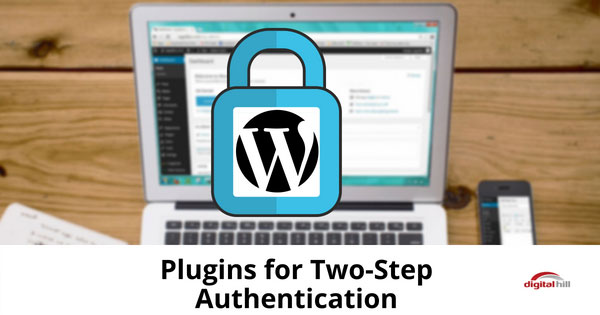Plugins for Two-Step Authentication

WordPress, being the most popular CMS platform globally, attracts a lot of attention from hackers. In 2012, 170,000 WordPress websites were hacked. And in the 12 months leading up to February 2017, 1.5 million WordPress sites were attacked. It’s popular because hackers know if they can get into one site, they can find a way into many sites.
What’s worse, you never know what the hackers plan to do with your WordPress site after accessing it. Most are usually taken offline, some may be defaced, others get spammed. As well some get the ecommerce payment processing hijacked to foreign accounts and so forth. Some sites have even been held to ransom through malware attacks while others have lost consumer data to these attacks.
To protect yourself, your site, and your consumers’ data from the bad guys, you need to take steps to lock up your website. Two-factor authentication is one of the many ways to bolster the security of your WordPress site.
What is Two-Factor Authentication?
WordPress two-factor authentication service allows owners to add a second layer of security on their sites. Instead of just asking for a password, you’re also sending an SMS or email with a code. Access to the site is granted with this additional code.
The benefit of this approach is that even if someone were to guess your password, they’d also need your phone or email logins to access the website. Not easy, right?
Two-Factor Authentication Plug-ins for WordPress
If you want to add this additional security measure on your WordPress site, there are several two-factor authentication plug-ins options.
Shield Security for WordPress
By far the most popular two-step authentication plug-in for WordPress. Shield Security for WordPress is importantly easy to use. You can limit login attempts, automatically detect malicious file changes, and authenticate both Google and email logins. You also get reliable customer support.
Google Authenticator – 2FA Authentication
In addition to supporting Google Authenticator, this 2FA plug-in also supports QR code authentication, Push Notification, Security Questions, Soft Token, OTP over SMS, and OTP over email among others. Premium users also enjoy role-based redirection after login and several add-ons for increased convenience.
Rublon Two-Factor Authentication
Download Rublon in one click and activate in one further click. The main advantage over other two-factor authentication plug-ins is that with Rublon you don’t need a password each time you want to log into your site. All you have to do is click on a link or scan a Rublon Code.
WordPress 2-Step Verification
The WordPress 2-Step Verification plug-in works by sending a code to your email address whenever you enter your name and password as part of the sign-in process. Once the code is generated, you go to your inbox, retrieve the code, and use it on the sign-in page to gain access to your WordPress website.
Google Authenticator – Per User Prompt
Finally, Google Authenticator – Per User Prompt is an option to secure two-factor authentication on WordPress. One thing you need to know, however, is the plug-in asks every user for an authentication token. Regardless of whether 2FA is enabled on their site or not. This can be a bit of a chore for administrators. Having to enter a code every time you want to access your site, even when 2FA is deactivated, can be tedious.
Other Options to Consider
If the five options discussed above don’t appeal to you, feel free to check out UNLOQ Two-Factor Authentication, QR Code Authenticator (Clef like), SecSign, SnapID Two-Factor Authenticator, ActiveTruth, and FortyTwo Two-Factor Authenticator.
Bottom Line
WordPress powers 30% of the world’s website. Because it holds such a large market share hackers target this website more than others.
To give hackers an extra layer of security to bust through, Two-Step Authentication is an excellent choice.
